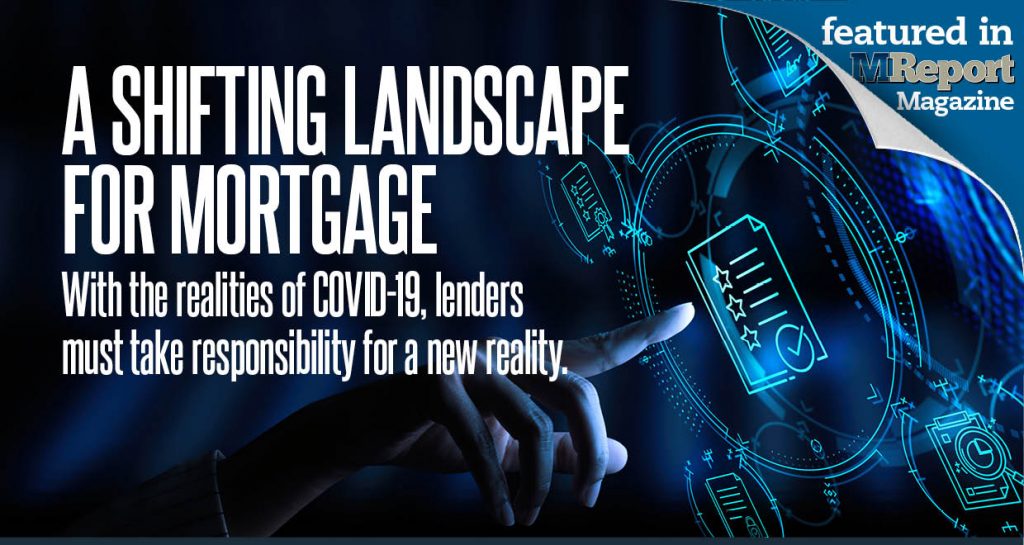
Editor's note: This story originally appeared in the December edition of MReport.
The highly regulated mortgage industry has been slower to adopt digital processes than most. This is largely because a typical mortgage transaction involves the participation and alignment of multiple parties, from borrower initiation through loan close, and later to its sale on the secondary market.
However, two converging market dynamics have accelerated digital mortgage adoption nationwide, both stemming from the COVID-19 pandemic: the surge in refinancing applications and the need for social distancing. Refinance applications were up 479% in March 2020 from a year ago according to the Mortgage Bankers Association. And although the numbers have dropped slightly since March, refinance activity is still strong (up 176% year over year). Lenders need an action plan for digital closings that will support the immediate need to minimize in-person contact but is robust enough to support a long-term scalable strategy that covers all forms of closings—from paper to hybrid to digital.
The Need for Purpose-Built, Remote, and Contactless Lending
There is no doubt that COVID-19 has impacted every single aspect of the mortgage industry. When I speak to lenders about how the virus is affecting them, at the very top of their list of concerns is keeping their business running and being able to continue to originate and close loans. Nine times out of 10, the discussion is focused on how they can move from today’s paper-in-tensive environment to one that is digital and able to take advantage of all technology options so that business operations can continue. These issues are not specific to the mortgage industry; I am hearing this in other sectors that we work with too, including SBA, automotive, and personal loans.
With all parties being concerned about being exposed or exposing others to COVID-19, some settlement companies have gotten creative with things like curbside closings. This solved an immediate problem, but the long-term solution goes beyond creative problem solving to include technology such as remote online notary. The ultimate goal is to take the entire mortgage process online.
Remote Closings—What’s Holding Us Back?
When we speak to clients about RON, which includes the notarization of documents online from a location other than where the borrower is, we typically hear about a few key challenges.
The first challenge we hear about is the legality of RON across various states. At the start of 2020, only 23 states had legalized RON. With the advent of COVID-19, nearly all have enacted emergency authorizations making RON available; some are permanent decrees while others remain as temporary executive orders.
Senators Mark Warner (D-Virginia) and Kevin Cramer (R-North Dakota) have introduced a bill that would allow RON nationwide, enabling consumers to close on a home without risk of COVID-19 exposure. The bill, entitled the “Securing and Enabling Commerce Using Remote and Electronic Notarization Act of 2020,” would authorize every notary in the U.S. to perform remote online notarizations. However, there’s no telling when and if it will get passed, and to-date legislation has been a slow-moving process. What remains is that every state has its own idiosyncrasies around RON.
The second issue surrounds the settlement agent and borrower’s technology readiness. Both the agent and the borrower need internet-connected devices with an appropriate connection speed and screen size (no mobile phones please) with video capability to successfully complete an online transaction. This is not always readily available—but it’s improving every day.
The third obstacle for originators has been the concern that an eNote executed as part of a RON transaction will be accepted by the secondary market. Fannie Mae and Freddie Mac have both been accepting eNotes for several years. Most recently, other critical secondary market players have moved forward with accepting eNotes, including Ginnie Mae, the Federal Home Loan Banks, and a number of large aggregators. The good news is that they all allow for RON when their guidelines are followed.
Compliant-First Digital Adoption Made Simple
A fully digital, end-to-end mortgage transaction how-ever, goes beyond RON. Moving to digital processes for loans requires digital asset certainty—the knowledge that your loan is the authoritative copy, compliant, and legally enforceable. The right technology, specifically purpose-built platforms that ensure all aspects of lending are compliant, and streamlined and simplified processes. Whether you are creating and holding your loans, or choose to pledge, transfer, sell, or securitize them, they need to be trusted throughout their lifecycle for the digital process to work.
Under industry regulations, it is not sufficient to simply create and store a loan digitally. Lenders need to ensure their digital loans are supported by an auditable and tamper-proof digital chain of custody and legal standing under UETA, ESIGN, and UCC. In addition, the loans should meet the six criteria of Safe Harbor industry standards to guarantee the secured party maintains their security interest in each loan. eOriginal has been delivering this capability to the financial services market for 20 years.
Next Steps for Lenders
The growth of the digital mortgage industry brings great opportunity. With this opportunity comes an important responsibility to enable the smart digital growth of the mortgage industry through robust technology and the rigor of digital asset certainty standards that will protect the health of our financial markets.
My advice to lenders is to push the “go” button on digital closings that are as digital as possible, including options that are both hybrid and fully digital—because no matter what happens, when the COVID-19 pandemic is over, our new normal will look a lot different. Oftentimes, it takes a crisis to spark transformational change. This current pandemic has shown that we need to be prepared for any type of emergency, of any scale. It also shows that RON and digital mortgages have benefits for everyone—providing speed, capital and operational efficiencies, convenience, and business continuity. We also have the technology to meet legal and industry requirements, ensure compliance, and instill trust throughout the loan’s lifecycle.